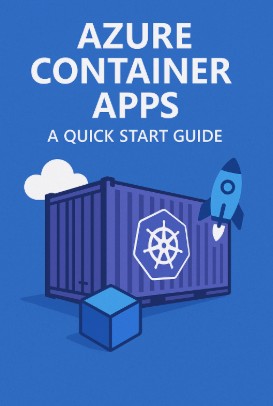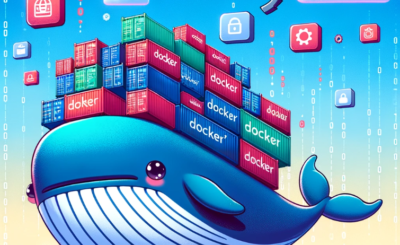Deploying and managing containerized applications can be complex. Juggling infrastructure, scaling, and security often leads to operational overhead. This comprehensive guide will help you quickly get started with Azure Container Apps, a fully managed container orchestration service that simplifies the process, allowing you to focus on building and deploying your applications rather than managing the underlying infrastructure. We’ll walk you through the fundamentals, providing practical examples and best practices to get your Azure Container Apps up and running in no time.
Table of Contents
Understanding Azure Container Apps
Azure Container Apps is a serverless container service that allows you to deploy and manage containerized applications without the complexities of managing Kubernetes clusters. It abstracts away the underlying infrastructure, providing a simple, scalable, and secure environment for your applications. This makes it an ideal solution for developers and DevOps teams who want to focus on application development and deployment rather than infrastructure management.
Key Benefits of Azure Container Apps
- Simplified Deployment: Deploy your containers directly from a container registry like Azure Container Registry (ACR) or Docker Hub with minimal configuration.
- Serverless Scaling: Automatically scale your applications based on demand, ensuring optimal resource utilization and cost efficiency.
- Built-in Security: Leverage Azure’s robust security features, including role-based access control (RBAC) and network policies, to protect your applications.
- Integrated Monitoring and Logging: Monitor the health and performance of your applications using Azure Monitor, gaining valuable insights into their operation.
- Support for Multiple Programming Languages: Deploy applications built with various languages and frameworks, offering flexibility and choice.
Creating Your First Azure Container App
Let’s dive into creating a simple Azure Container Apps instance. We’ll assume you have an Azure subscription and basic familiarity with container technology.
Prerequisites
- An active Azure subscription.
- An Azure Container Registry (ACR) with your container image (or access to a public registry like Docker Hub).
- The Azure CLI installed and configured.
Step-by-Step Deployment
- Create a Container App Environment: This is the hosting environment for your containers. Use the Azure CLI:
az containerapp env create --name--resource-group --location - Create a Container App: Use the following Azure CLI command, replacing placeholders with your values:
az containerapp create --resource-group--name --environment --image : --cpu 1 --memory 1G - Monitor Deployment: Use the Azure portal or CLI to monitor the deployment status. Once deployed, you should be able to access your application.
Example: Deploying a Simple Node.js Application
Consider a simple Node.js application with a Dockerfile like this:
FROM node:16
WORKDIR /app
COPY package*.json ./
RUN npm install
COPY . .
EXPOSE 3000
CMD [ "npm", "start" ]
Build this image and push it to your ACR. Then, use the Azure CLI command from the previous section, replacing
Advanced Azure Container Apps Features
Azure Container Apps offers advanced features to enhance your application’s performance, scalability, and security.
Scaling and Resource Management
You can configure autoscaling rules to automatically adjust the number of instances based on CPU utilization, memory usage, or custom metrics. This ensures optimal resource utilization and cost efficiency.
Ingress and Networking
Azure Container Apps provides built-in ingress capabilities, allowing you to easily expose your applications to the internet using custom domains and HTTPS certificates. You can also configure network policies to control traffic flow between your containers and other Azure resources.
Secrets Management
Securely manage sensitive information like database credentials and API keys using Azure Key Vault integration. This prevents hardcoding secrets into your container images, enhancing application security.
Custom Domains and HTTPS
Easily configure custom domains and enable HTTPS using Azure’s built-in features for enhanced security and brand consistency. This ensures that your application is accessible over secure connections.
Azure Container Apps vs. Other Azure Container Services
Choosing the right container service depends on your specific needs. Here’s a quick comparison:
| Service | Best For |
|---|---|
| Azure Container Instances (ACI) | Short-lived tasks, quick deployments |
| Azure Kubernetes Service (AKS) | Complex, highly scalable applications requiring fine-grained control |
| Azure Container Apps | Simplified deployment and management of containerized applications without Kubernetes expertise |
Frequently Asked Questions
Q1: What are the pricing models for Azure Container Apps?
Azure Container Apps uses a pay-as-you-go model, charging based on resource consumption (CPU, memory, and storage) and the number of container instances running. There are no upfront costs or minimum commitments.
Q2: Can I use Azure Container Apps with my existing CI/CD pipeline?
Yes, Azure Container Apps integrates seamlessly with popular CI/CD tools like Azure DevOps, GitHub Actions, and Jenkins. You can automate the build, test, and deployment process of your applications.
Q3: How do I monitor the health and performance of my Azure Container Apps?
Azure Monitor provides comprehensive monitoring and logging capabilities for Azure Container Apps. You can track metrics like CPU utilization, memory usage, request latency, and errors to gain insights into your application’s performance and identify potential issues.
Q4: Does Azure Container Apps support different container registries?
Yes, Azure Container Apps supports various container registries, including Azure Container Registry (ACR), Docker Hub, and other private registries. You have the flexibility to use your preferred registry.

Conclusion
Azure Container Apps provides a compelling solution for developers and DevOps teams seeking a simplified, scalable, and secure way to deploy and manage containerized applications. By abstracting away the complexities of infrastructure management, Azure Container Apps empowers you to focus on building and deploying your applications, resulting in increased efficiency and reduced operational overhead. Start experimenting with Azure Container Apps today and experience the benefits of this powerful and easy-to-use service. Remember to leverage the comprehensive documentation available on the Microsoft Learn website for further assistance and deeper understanding of advanced configurations.
For more advanced topics, refer to the official Azure Container Apps documentation and explore the Cloud Skills Boost platform for additional learning resources. Thank you for reading the DevopsRoles page!
